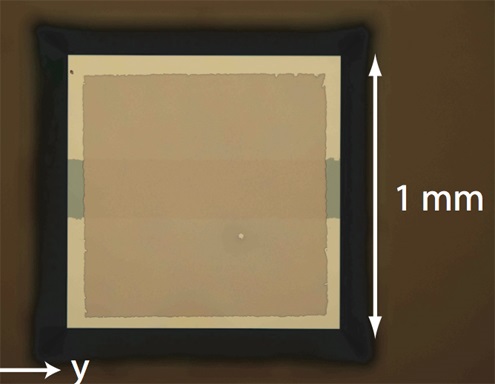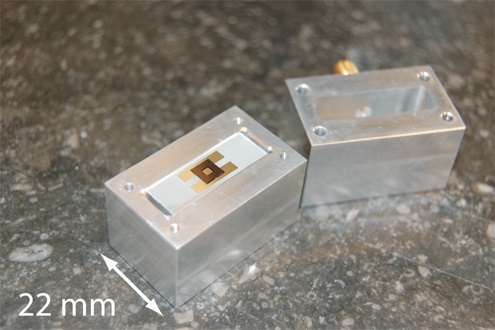09 October 2015
TU Delft researchers have succeeded in cooling a massive, millimeter-sized vibrating membrane to a temperature of only 34 microkelvin, 34 millionths of a degree above absolute zero, the lowest temperature reported to date for a mechanical resonator. The experiments bring the field a step closer to quantum superpositions of macroscopic objects and trying to solve the famous quantum paradox of ‘Schrodinger’s cat’. The researchers report on their findings in the October 9th edition of Nature Communications.
One of the strangest predictions of quantum mechanics is that things can be in two places at the same time. Since its prediction from quantum theory, such quantum ‘superpositions’ have now been clearly demonstrated for tiny objects such as electrons or atoms, where we now know that quantum theory works very well.
‘Although it seems crazy, quantum mechanics also tells us that the same rules should also apply for macroscopic objects: a coffee cup can be on the table and in the dishwasher at the same time, or Schrodinger’s cat can be in a quantum superposition of being dead and alive’, says Gary Steele, the professor who supervised the research; the first author of the article is dr. Mingyun Yuan.
‘Despite the fact that quantum theory tells us that such macroscopic superpositions should happen all the time, it is not something we see ourselves in our daily lives: the coffee cup is either clean or dirty and the cat is either dead or alive. Why the cat is only either dead or alive, and not both at the same time, is still an open question in quantum mechanics.’
In recent years, scientists have been exploring how far the rules of quantum mechanics really apply by extending quantum experiments from things like single atoms to large macroscopic objects like a vibrating drum to test if large objects, visible to the human eye, can really be in two places at the same time. A crucial first step in these experiments is lowering the temperature of the drum to prevent that random thermal ‘kicks’ destroy the fragile quantum state.

A top view of the vibrating membrane itself.
In recent experiments at Delft University of Technology, researchers have used microwave cavities, similar to a microwave oven, to cool the motion of a millimeter-sized vibrating membrane to a record low temperature of only 34 microkelvin, 34 millionths of a degree above absolute zero. Unlike heating your food in a microwave oven at home, researchers tricked the microwave radiation into cooling the motion of the drum close to its quantum ground state.
Having reached the lowest temperature on earth for a mechanical object, where do they go from here? ‘Future experiments will focus on cooling to even lower temperatures, deep into the ground state, and ultimately bringing the drum into a quantum superposition state where it will be ‘bouncing up’ and ‘bouncing down’ at the same time. Doing so, we will try to explore the question of why we don’t see ‘quantum cats’ in our everyday life’, says Steele.
This research not only helps our fundamental understanding of quantum mechanics, but it might also have practical applications in the future. As mechanical resonators are much bigger than the quantum bits of a quantum computer, they could be far less vulnerable to the decoherence that destroys quantum information. Therefore, mechanical resonators might be able to store quantum information much longer than quantum bits, making them interesting candidates for a future quantum memory.















